| Description |
- Bridges Thunderbolt-enabled devices to DisplayPort displays.
- Supports various resolutions.
- Offers plug-and-play functionality.
- Compact design for convenience.
|
- Connects Thunderbolt-enabled devices to HDMI displays
- Enables high-definition video and audio transmission
- Ideal for extending or mirroring screens onto larger displays
- Various designs and specifications available
- Check compatibility and additional features before purchasing
|
- Signal Conversion: BNC to HDMI
- Compatibility: Legacy to Modern Displays
- Resolution Support: SD, HD, and 4K
- Audio Integration: Some Models
- Easy Installation: Plug-and-Play
- Use Cases: Surveillance, Broadcast
- Signal Quality: Maintained with High-Quality Cables
|
- Connectivity: Mini DisplayPort to Display
- Compatibility: MacBooks, Ultrabooks, Monitors
- Resolution Support: HD, Quad HD, Ultra HD
- Audio/Video Transmission
- Durable Construction
- Plug-and-Play
- Length Options
- Versatile Usage
|
- High-Speed Data Transfer: Thunderbolt 3 (USB-C) cables enable rapid data transfer at speeds up to 40 Gbps.
- 4K Video Output: Capable of transmitting high-resolution video signals, including 4K and 5K resolutions.
- Power Delivery: Provides power to compatible devices for charging and operation.
- Daisy-Chaining: Allows for connecting multiple devices together in a single chain.
- Compatibility: Backward compatible with USB-C devices, offering versatility in connectivity.
- Versatile Use: Suitable for various devices such as laptops, desktops, monitors, and external drives.
|
- High-Speed Data Transfer: Thunderbolt 3 (USB-C) cables enable rapid data transfer at speeds up to 40 Gbps.
- 4K Video Output: Capable of transmitting high-resolution video signals, including 4K and 5K resolutions.
- Power Delivery: Provides power to compatible devices for charging and operation.
- Daisy-Chaining: Allows for connecting multiple devices together in a single chain.
- Compatibility: Backward compatible with USB-C devices, offering versatility in connectivity.
- Versatile Use: Suitable for various devices such as laptops, desktops, monitors, and external drives.
|
| Content | A Thunderbolt-to-DisplayPort adapter is a device used to connect a Thunderbolt-enabled device, such as a computer or laptop, to a DisplayPort-enabled display or monitor.
Here's a brief description of its functionality and features:
- Connectivity: The adapter allows you to bridge the gap between devices with Thunderbolt ports and displays equipped with DisplayPort connectors.
- Compatibility: It is designed to work with devices that have Thunderbolt ports, including MacBooks, PCs, and laptops, and displays that support DisplayPort connections.
- Display Support: It enables you to transmit video and audio signals from your Thunderbolt device to the DisplayPort display, allowing you to mirror or extend your screen.
- Resolution Support: Depending on the specific adapter and the capabilities of your devices, it may support various resolutions, including Full HD (1080p), Quad HD (1440p), and even Ultra HD (4K) resolutions.
- Plug-and-Play: In most cases, these adapters are plug-and-play devices, requiring no additional software installation. Simply connect the adapter to your Thunderbolt port and the DisplayPort cable to your display, and your devices should recognize each other.
- Compact Design: They typically have a compact and portable design, making them convenient for travel or use in different work environments.
- Bi-Directional Support: Some adapters may support bi-directional functionality, allowing you to connect a Thunderbolt-enabled display to a device with a DisplayPort output.
Overall, Thunderbolt-to-DisplayPort adapters provide a simple and effective solution for connecting Thunderbolt devices to DisplayPort displays, ensuring compatibility and seamless transmission of audio and video signals. | A Thunderbolt-to-HDMI adapter is a device that allows you to connect a Thunderbolt-enabled device, such as a computer or laptop, to a display or monitor that uses HDMI input. Thunderbolt is a high-speed input/output technology developed by Intel, commonly found on Apple computers and some PCs. HDMI (High Definition Multimedia Interface) is a widely used standard for transmitting high-definition video and audio signals.
The adapter typically has a Thunderbolt connector on one end, which plugs into the Thunderbolt port on your device, and an HDMI connector on the other end, which plugs into the HDMI port on your display. This allows you to extend or mirror your device's screen onto the external monitor or TV, enabling you to enjoy high-definition content, presentations, or other multimedia content on a larger screen.
Thunderbolt-to-HDMI adapters come in various designs and specifications, so it's essential to ensure compatibility with your device and display. Additionally, some adapters may support additional features such as 4K resolution, audio output, or multiple display connections, so it's worth considering your specific needs when selecting an adapter. |
BNC-to-HDMI adapters are connectors designed to convert BNC (Bayonet Neill-Concelman) video signals to HDMI (High Definition Multimedia Interface) signals. Here's a description of their features:
- Signal Conversion: BNC-to-HDMI adapters allow devices with BNC outputs, such as surveillance cameras or professional video equipment, to connect to devices with HDMI inputs, such as modern TVs, monitors, or projectors.
- Compatibility: These adapters bridge the gap between legacy BNC video equipment and modern HDMI displays, enabling seamless connectivity between different types of devices.
- Resolution Support: BNC-to-HDMI adapters typically support various resolutions, including standard definition (SD), high definition (HD), and even some higher resolutions like 4K, depending on the adapter's capabilities.
- Audio Integration: Some BNC-to-HDMI adapters also support audio transmission, allowing both video and audio signals to be converted and transmitted through the HDMI connection.
- Construction: These adapters are constructed with durable materials to ensure reliable signal transmission and longevity.
- Easy Installation: They are typically plug-and-play devices, requiring no additional drivers or software installation. Users can simply connect the BNC end to the device's BNC output and the HDMI end to the HDMI input of the target device.
- Use Cases: BNC-to-HDMI adapters are commonly used in surveillance systems, broadcast studios, and other professional video setups where older BNC equipment needs to be integrated with modern HDMI displays.
- Signal Quality: While adapters themselves do not affect signal quality, it's essential to ensure that the cables used with the adapters are of high quality to maintain signal integrity during transmission.
Overall, BNC-to-HDMI adapters provide a convenient solution for integrating legacy BNC video equipment with modern HDMI displays, offering compatibility and flexibility in various audiovisual setups.
|
Standard Mini DisplayPort cables are used to connect devices with Mini DisplayPort outputs to displays, monitors, or other devices with compatible inputs. Here's a description of their features:
- Connectivity: Mini DisplayPort cables provide a reliable connection between devices with Mini DisplayPort outputs, such as laptops, desktop computers, or tablets, and displays or monitors equipped with Mini DisplayPort or Thunderbolt inputs.
- Compatibility: These cables are compatible with devices that support Mini DisplayPort or Thunderbolt technology, including many MacBooks, Ultrabooks, and Microsoft Surface devices, as well as monitors and displays from various manufacturers.
- Resolution Support: Mini DisplayPort cables support various resolutions, including standard HD (1080p), Quad HD (1440p), and even Ultra HD (4K), depending on the capabilities of the connected devices.
- Audio and Video: Mini DisplayPort cables can transmit both audio and video signals, allowing users to enjoy high-definition multimedia content on compatible displays or monitors.
- Construction: These cables are typically constructed with high-quality materials to ensure durability and reliable signal transmission. They may feature gold-plated connectors for better conductivity and resistance to corrosion.
- Length Options: Mini DisplayPort cables are available in various lengths to accommodate different setups and distances between devices and displays.
- Plug-and-Play: They are generally plug-and-play devices, requiring no additional drivers or software installation. Users can simply plug one end of the cable into the Mini DisplayPort output of their device and the other end into the Mini DisplayPort or Thunderbolt input of their display.
- Versatility: Mini DisplayPort cables are versatile and can be used for various applications, including connecting laptops to external monitors for extended desktop setups, connecting tablets to projectors for presentations, or connecting desktop computers to high-resolution displays for gaming or video editing.
Overall, Standard Mini DisplayPort cables offer a convenient and reliable solution for connecting compatible devices to displays or monitors, enabling high-quality audio and video transmission for a wide range of applications.
| Thunderbolt 3 (USB-C) cables are advanced connectivity solutions designed to facilitate high-speed data transfer, video output, and power delivery between compatible devices. These cables utilize the USB Type-C connector, which is small, reversible, and versatile, allowing for easy and convenient connections.
Key features and functionalities of Thunderbolt 3 (USB-C) cables include:
- High-Speed Data Transfer: Thunderbolt 3 cables support data transfer speeds of up to 40 Gbps, making them suitable for transferring large files, backing up data, and other data-intensive tasks.
- 4K Video Output: Thunderbolt 3 cables can transmit high-resolution video signals, including 4K and even 5K resolutions, making them ideal for connecting monitors, displays, and other video output devices.
- Power Delivery: These cables can deliver power to connected devices, enabling charging of laptops, tablets, smartphones, and other devices that support USB Power Delivery (USB PD) standards.
- Daisy-Chaining: Thunderbolt 3 cables allow for daisy-chaining multiple devices together, simplifying cable management and reducing clutter in your workspace.
- Compatibility: Thunderbolt 3 cables are backward compatible with USB-C devices, although their full range of features may not be available when connected to non-Thunderbolt 3 devices.
- Versatility: Due to the USB Type-C connector's versatility, Thunderbolt 3 cables can be used with a wide range of devices, including laptops, desktop computers, external storage drives, monitors, and docking stations.
Overall, Thunderbolt 3 (USB-C) cables offer a comprehensive solution for high-speed data transfer, video output, and power delivery, making them essential accessories for modern computing and multimedia setups. | Thunderbolt 3 (USB-C) cables are advanced connectivity solutions designed to facilitate high-speed data transfer, video output, and power delivery between compatible devices. These cables utilize the USB Type-C connector, which is small, reversible, and versatile, allowing for easy and convenient connections.
Key features and functionalities of Thunderbolt 3 (USB-C) cables include:
- High-Speed Data Transfer: Thunderbolt 3 cables support data transfer speeds of up to 40 Gbps, making them suitable for transferring large files, backing up data, and other data-intensive tasks.
- 4K Video Output: Thunderbolt 3 cables can transmit high-resolution video signals, including 4K and even 5K resolutions, making them ideal for connecting monitors, displays, and other video output devices.
- Power Delivery: These cables can deliver power to connected devices, enabling charging of laptops, tablets, smartphones, and other devices that support USB Power Delivery (USB PD) standards.
- Daisy-Chaining: Thunderbolt 3 cables allow for daisy-chaining multiple devices together, simplifying cable management and reducing clutter in your workspace.
- Compatibility: Thunderbolt 3 cables are backward compatible with USB-C devices, although their full range of features may not be available when connected to non-Thunderbolt 3 devices.
- Versatility: Due to the USB Type-C connector's versatility, Thunderbolt 3 cables can be used with a wide range of devices, including laptops, desktop computers, external storage drives, monitors, and docking stations.
Overall, Thunderbolt 3 (USB-C) cables offer a comprehensive solution for high-speed data transfer, video output, and power delivery, making them essential accessories for modern computing and multimedia setups. |
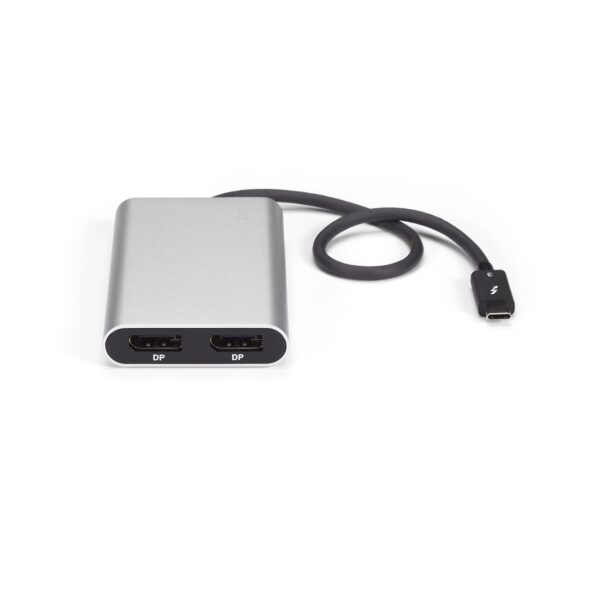
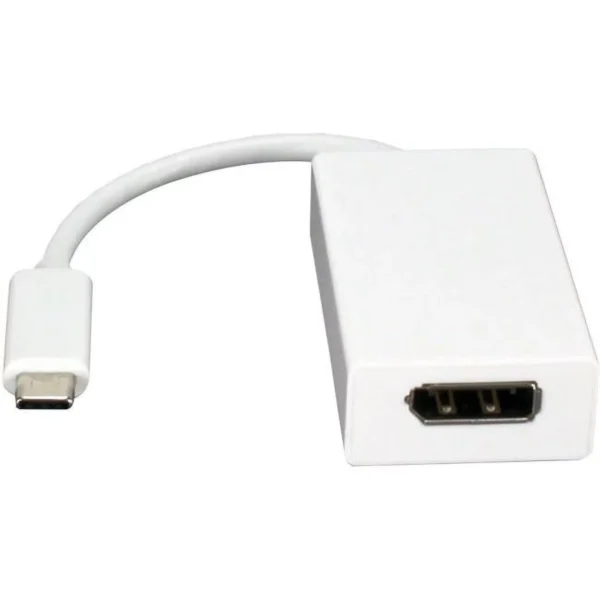
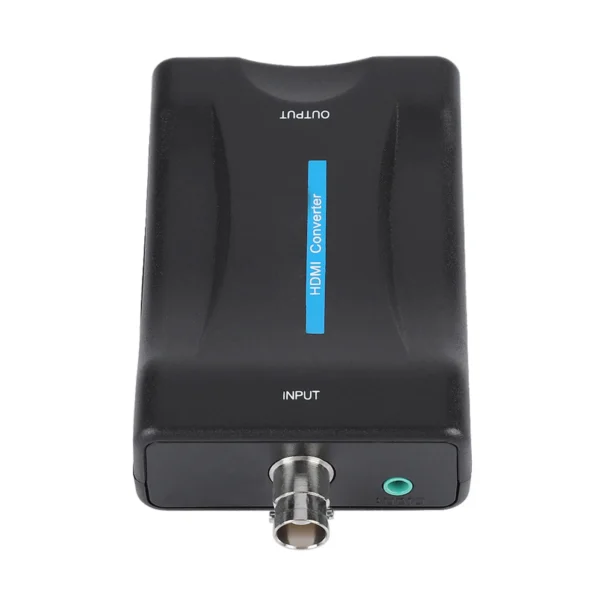
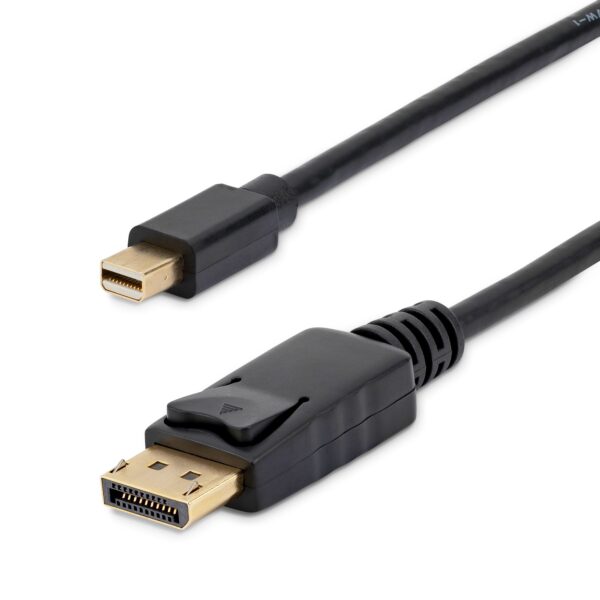
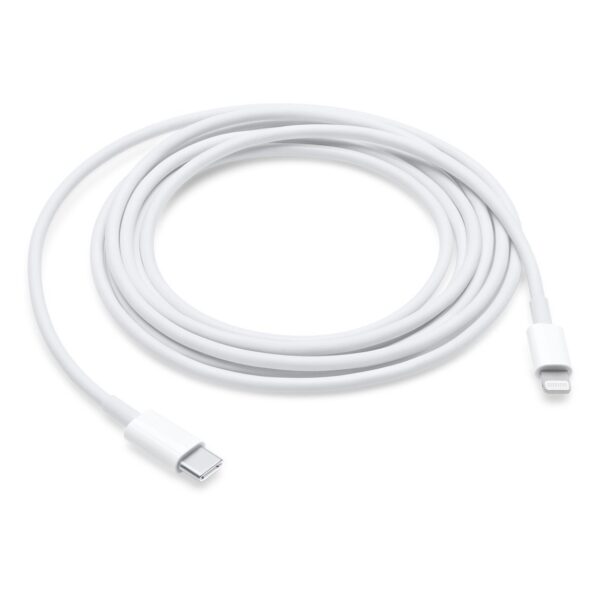
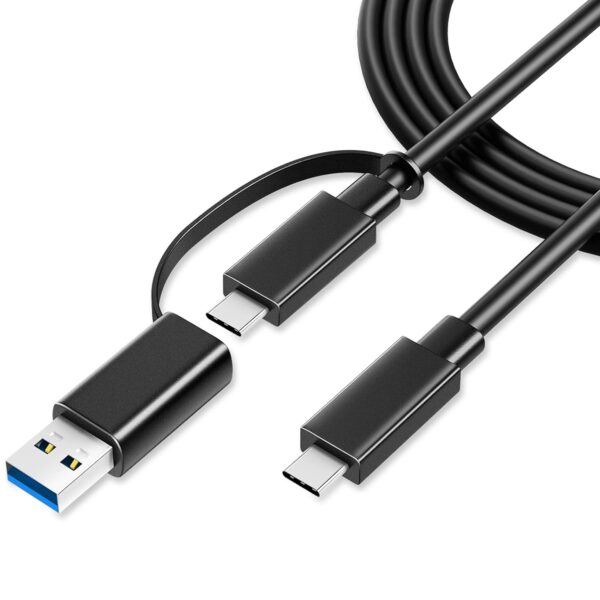















Rating & Review
There are no reviews yet.